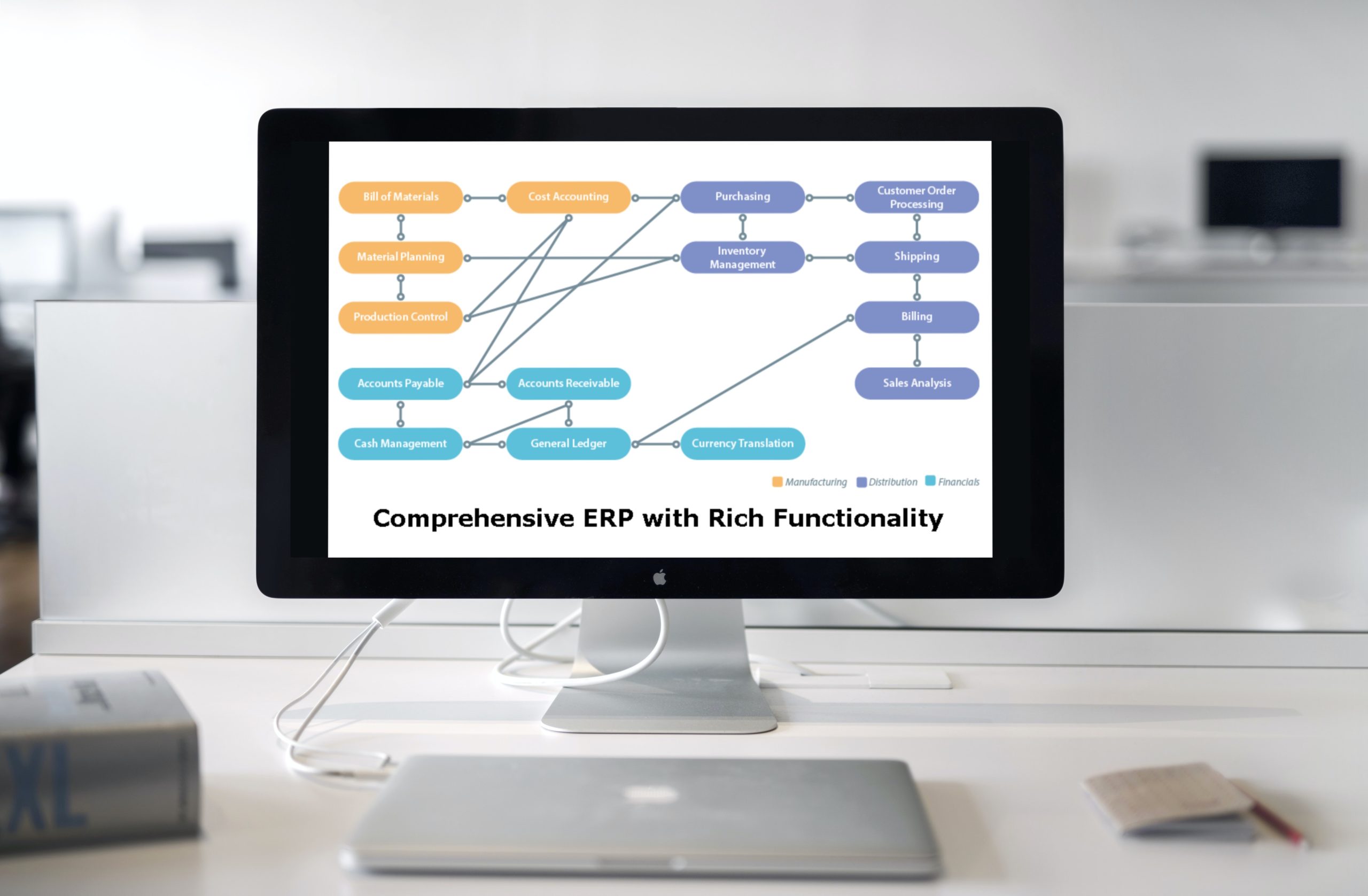Development teams frequently have to struggle with an interesting irony: They need automation to make processes faster, but building an automation process isn’t fast. In fact, it can easily take several months.
Time-consuming programming is one of the biggest challenges with business process integration. But with low-code automation, you can develop a system that’s both fast and fast to build — without compromising quality. Not only do you save time and money by using a low-code platform to create your automation system, but you may also end up with a more reliable, easier-to-maintain solution.
Key Insights
- When you use a low-code platform to build automation, you can use stakeholders from within your own organization, which infuses genuine domain expertise into each project.
- Low-code solutions work well in industries such as pharmaceuticals, education, home loans, and more.
- LANSA Composer streamlines the process of building automation tools by giving you a graphical user interface and drag-and-drop components to design automated workflows.
What is Low-Code Automation?
Low-code automation refers to a method of developing software where the user can take advantage of visual interfaces and prebuilt tools. In this way, they can create automated workflow solutions faster, as well as test and deploy them. Even if a user has very little coding experience — or none at all — they can still build fully functional automation applications.
For a breakdown of general low-code app-building, check out our Complete Guide to Low Code Development.
Benefits of Low-Code Automation
While traditional automation typically requires deep knowledge of programming languages, local code automation platforms make programming accessible to a wide range of professionals. In this way, they provide many of the general benefits of low-code app development, including:
Easy-to-use Tools
The principles and building techniques that drive low-code automation solutions are relatively easy to understand. This eliminates the need to hire expert developers. In some cases, departments can create automation solutions without even having to rely on the IT department for help.
Design According to Customer Needs
One of the most successful best practices when it comes to developing any solution is to design with the end user in mind. Low-code automation tools make it easier to meet this objective because those who build the system are those who are most in touch — and in tune — with customers or internal end users.
Also, if there’s a sudden change in the market or what end users need, an organization that uses internal programmers to build low-code solutions can react to these much faster. This is because you shrink the gap between programmers and end users.
More Value, Yet Less Expensive
An automation system needs to be made of solid, reliable components that minimize downtime and loss of data. They also need to be easy to audit and check for security issues. With a low-code development environment, you use premade tools consisting of tested components. This adds stability to the end product while also making it easier to check for potential issues down the line.
Enhanced Agility and Development Efficiency
Low-code workflow automation makes it easy to build and edit processes. As a result, you can quickly make changes to existing processes in response to evolving demands. A low-code automation platform also makes it easier to stay in line with regulatory adjustments and client demands because altering the system may involve simply switching out one component for another.
How Can Low-Code Automation Benefit Your Business?
Low-code process automation isn’t about only building solutions for one or two departments. Rather, it gives you the ability to automate processes for many, if not all, departments that use computers in their workflow. When using low-code business process automation, you can:low-code
Use Domain Experts to Build Solutions
Thanks to its ease of use, a low-code automation platform lowers the barrier of entry for many who would normally not get involved in the programming process. This often includes people with years of experience performing business-critical jobs or serving customers. By bringing these domain experts to the table, you ensure the automations you design add genuine speed and accuracy to your target workflows.
Low-Code Automation Use Cases
What is low-code business process automation in terms of specific industry use cases? Similar to the variety of general low-code use cases and examples, a diverse mix of industries can benefit from low-code automation platforms.
Pharmaceutical Companies
Using low-code automation, pharmaceutical organizations don’t have to invest much money in speeding up their processes and making them more accurate. Ss workflows get more and more complex, it’s easy for inefficiencies to creep into the testing and analytical systems pharmaceutical companies depend on. But the right low-code platform makes it easy to create automated systems for gathering data about drug performance, analyzing the effects on target patients, and pinpointing how to adjust the formulas for different medicines.
Education
Schools, at all levels, have to constantly manage data regarding students, faculty, and staff to improve the quality of education and retain the most talented professionals. By using a low-code automation solution, stakeholders can build automatic workflows that make it easier to process critical information. In many cases, an automated workflow can speed up the process of analyzing data and giving teachers the opportunity to use the resulting insights to improve student learning.
Home Loans
The mortgage industry consists of many interdependent parts, all of which have to work together to keep lenders profitable and provide much-needed liquidity to borrowers. Identifying the right mortgage, processing applications, and underwriting often involve many repetitive tasks that are relatively straightforward to automate using a low-code platform.
For example, you can set up a system that automatically replies to emails and distributes customer questions to the right agent. You can also build a solution that automatically completes the majority of application forms or imports borrower data, copying it from one form to another.
Software Development Companies
Not only can local development add tons of speed to the process of building software, but it also makes it easier to meet the demands of customers. For example, you can easily create a system for automatically processing support tickets, making sure they’re assigned to the right individual based on both expertise and current workload.
One of the most common use cases for low-code automation is in testing software. Rather than having users or internal staff manually click through newly built pages and components, you can use an automated solution to test user interfaces and connections with databases and other dependencies.
A Real World Example of Low-Code Automation
Australian company Greens General Foods had implemented a number of changes to their ERP system, resulting in systems that were either hard to maintain, error-prone, or both. They needed to wind back these modifications without sacrificing the custom functionality that comes with seamless data integration.
Green’s turned to LANSA Composer, a low-code platform designed for building automated workflows.
Green’s used LANSA Composer to:
- Pull picking confirmations out of their Windows-based warehouse management system.
- Apply validation rules regarding order quantity and available inventory.
- Send alerts regarding inventory levels in relation to order quantity.
- Trigger billing in their BPCS (Business Planning and Control System) and send an automatically generated invoice to an electronic data interchange (EDI) server.
Green’s commented that the system they built using a combination of LANSA Composer and an aXes-Robot “turned out to be a very good solution” because “Composer does the orchestration and contains the business rules and smartness, while aXes-Robot helped us with ‘the last mile’ of integration that would otherwise have meant that we needed to continue to develop custom programs.”
Low-Code Automation Challenges
Even though low-code automation creation solves many problems, there are a few challenges you may want to keep in mind as you choose your solution:
- Governance. It’s important for everyone involved to understand their responsibilities when it comes to data security, high-level organizational goals, and other governance-related issues. This may require very direct training to ensure your staff understands the what and why of development.
- Onboarding. Those that have never developed software before will need training. But even experienced developers might need a few days to get used to using a low-code solution.
- Limited customization with some platforms. In some cases, A low-code platform may have solid, prebuilt components, but they may be very difficult or impossible to modify. In many cases, you can overcome this using a few lines of custom code.
How to Get Started with Low-Code Automation
Getting started with low-code automation is relatively simple if you use the following steps:
- Identify which systems you need to automate. This involves bringing several stakeholders to the table, asking about efficiency issues, and figuring out which individual tasks you can automate.
- Get executives and managers to buy in. This will be essential when it comes to change management. Encourage your higher-ups to embrace low-code tools and praise those who may be diving into development for the first time.
- Choose the right low-code platform. It should give you the flexibility and high-quality components you need to deliver dependable automation solutions. It should also make it easy to set up third-party data integrations and integrate data from your internal applications.
Improve the Quality and Speed of Your Automation Development with Low Code
Like Green’s General Foods and other organizations, you can use LANSA Composer to maximize the benefits and minimize the challenges of low-code automation. LANSA Composer gives you access to a visual interface and drag-and-drop tools that dramatically speed up the development process. LANSA Composer also comes with prebuilt, well-tested components that are easy to implement and add simplicity to the app maintenance process.
To learn more about the potential of LANSA Composer for building your automation solutions, connect with an expert today.
References
- What Is Low Code? IBM.com. Accessed November 26, 2024. https://www.ibm.com/topics/low-code
- Onoufriou, A. (2024) Safety Risks and Security Threats in Low-code Software Development, utwente.nl. Accessed November 26, 2024. http://essay.utwente.nl/101101/1/OnoufriouBAEEMCS.pdf


























